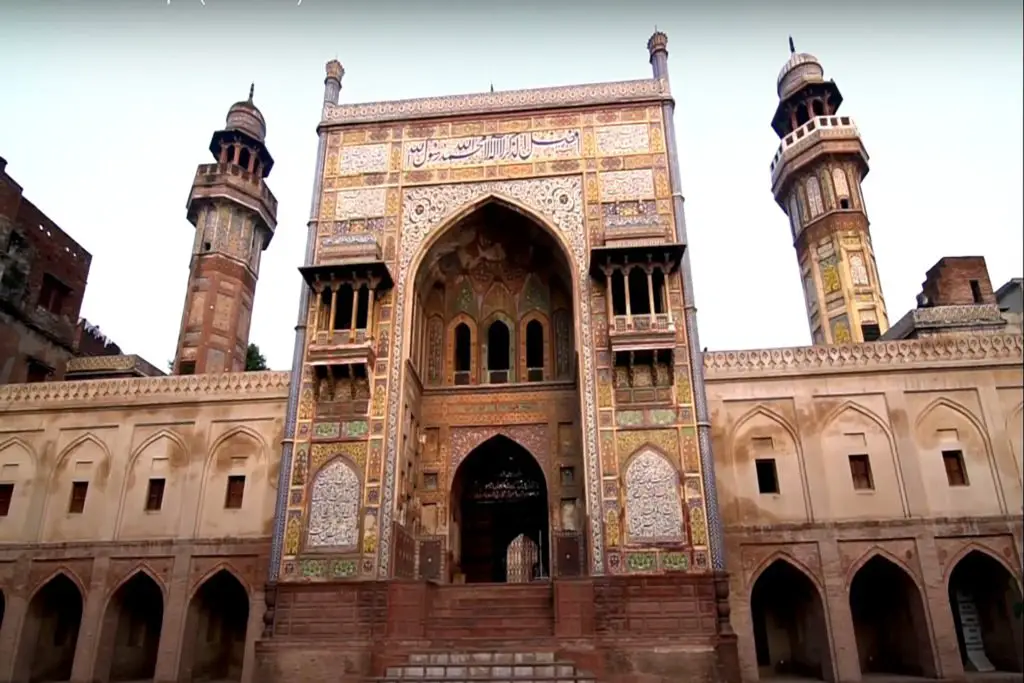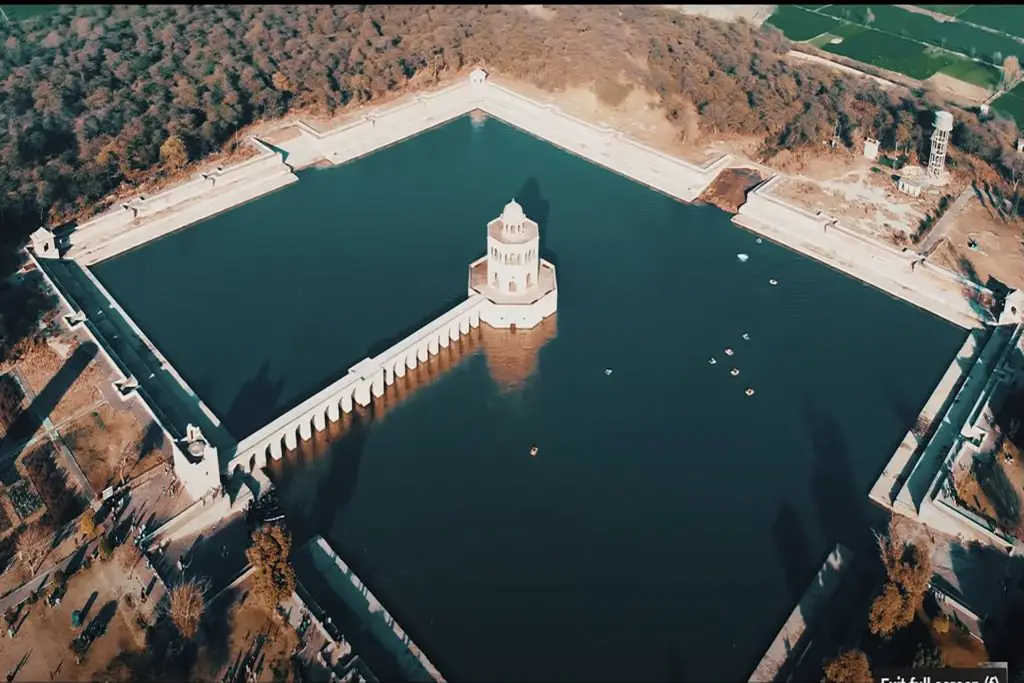Historical Background of Delhi Gate Lahore
Delhi Gate Lahore or Delhi Darwaza, is one of the 13 gates of the ancient Walled City of Lahore. The gate was named after the city of Delhi, the then capital of the Mughal empire. It was built during the reign of Mughal Emperor Akbar in the 1600s. Akbar had built thirteen gates around the city connected by a 100-foot [30 m] strong wall.
Delhi Gate, Lahore is one of the six remaining historic gates of the Walled City of Lahore, Pakistan. The Delhi Gate and nearby Shahi Hammam were restored in 2015 by the Aga Khan Cultural Service Pakistan.
During the English era, all the gates of Lahore Walled City of Lahore were demolished and the site was converted into a Round Road and a circular garden that still stands today.
Delhi Gate Lahore was built in 1638 as part of the rubble-high walls built around Shahjahanabad, the seventh city of Delhi. The governor used this gate to go to the Masjid in Juma to pray.
During the Mughal period, the gate was the main gateway to Lahore, and its doors were closed every evening. The surrounding area includes a number of important historical sites, including the 17th-century Wazir Khan Mosque, Shahi Hammam, and Havelis. The Delhi Gate also served as Union Council 27 (UC 27) at Tehsil Ravi of Lahore City District.
The gate was once part of the city walls of Lahore, which were demolished by the English after the Sepoy Mutiny in 1857. The gate itself was destroyed by the English, but it was rebuilt in the 19th century under the British Raj. After the partition of British India, the gate was occupied by a girls’ school.
Delhi Gate Lahore is mentioned by Rudyard Kipling in his 1891 short story “The City of a Bad Night.” Lahore’s famous Zamzama Gun rifle was originally placed at the Delhi Gate but was carried by the British to the front of the Lahore Museum.
Delhi Gate Lahore has two floors consisting of ten to twelve shops. The roof of the gate can be reached by stairs.
These thirteen gates gave access to the once-closed city of Lahore within a 30-foot-high [30 m] wall, built by the same Mughal King. The wall is no more today.
During the Mughal period, and later, the gate remained the main entrance to the city of Lahore. Royal ambassadors and commoners used this gateway to the city. All the gates of the walled city of Lahore were demolished during the English era.
The circular road and the circular garden, which still exists today, were built after a major demolition. Other facts confirm that the brick wall was used in the construction of the Lahore Railway by Mian Sultan, a British contemporary contractor. Somehow, only the gates were rebuilt in the early 1900s by the British.
Significance of Delhi Gate Lahore
Like many other monuments and structures within the walled city Delhi Gate Lahore experienced periods of harmony, serenity, and chaos. He once enjoyed the state of the reception gate at the Royal Palace with soldiers and guards welcoming people. Later during the British Sikh occupation it served as a magistrate’s court, a prison, and a local police station.
According to the annals, the gate had wooden doors similar to the ones fixed at Lohari Gate. The doors were probably destroyed during the liberation struggle. During the Mughal period, the gates to these gates were closed after sundown when the city fell asleep, thus preventing further entry into the city.
After parting the girl’s school was housed inside an existing gate building. Recent governments have tried to eradicate the school but all efforts to reverse it have failed. Local people also use the upper deck for weddings and religious ceremonies.
The gate structure has two floors and approximately ten to twelve rooms serve as classrooms. The most interesting part of the building is the stairs leading up to the roof of the gate. Many of the stairs in the main buildings and monuments are made at an angle of 90 degrees to protect the buildings from sudden attacks. As you climb the stairs, you release the energy and speed of the ascent. This shows the ingenuity and tactics of self-defense in those days.
If you go upstairs you can see the roof of the royal bathtub “Shahi Hamam” on the right. The roof of the gate is moderate, giving a spectacular view of the old town and the Delhi Gate shopping mall. In the history books, we find that the Wazir Khan Mosque was visible on the roof of the gate.
Near the Delhi gate Lahore was the “Sarai” (guest house) of Wazir Khan which was demolished during the floods that ravaged the city during the Sikh era. After the construction of the roads, the local people began to settle there.
The ground floor of the gate, which is the entrance to the Delhi Gate bazaar, has six rooms that have now been converted into tourist offices and a craft center. These chambers were used by chobdars in Mughal times, magistrates, and police in later times. Sometime after 1947, the rooms served as a treatment center and community health centers.
Outside the Delhi Gate Lahore, we see many tea, spice, and bean shops. These are actually part of Akbari Mandi, the Spice Market. This is a wonderful tourist destination; the gate is lit at night for visitors. It is a place you should visit. Local retailers selling exotic traditional items such as bangles, shoes, toys, and fabric are also found there.
One great local food shop is “Laddu Pethi Walay”. The seller opens the store at sunset and stays there for just a few hours.







